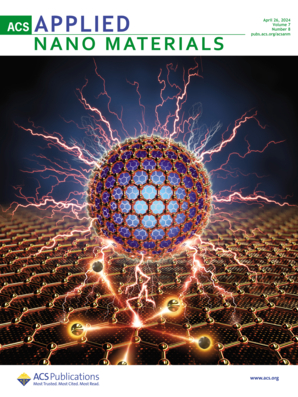New Mitochondria-Targeted Fisetin Derivative Compromises Mitophagy and Limits Survival of Drug-Induced Senescent Breast Cancer Cells.
IF 5.3
2区 材料科学
Q2 MATERIALS SCIENCE, MULTIDISCIPLINARY
引用次数: 0
Abstract
Mitochondria are considered as promising targets for cancer treatment. In the present study, triphenyl phosphonium cationic group-conjugated fisetin (mito-fisetin) was synthesized, and its anticancer activity was investigated in several cellular models of estrogen receptor (ER)-positive breast cancer in vitro and in vivo in proliferating and tamoxifen-promoted senescent states. Mito-fisetin, when used at low micromolar concentrations, stimulated the dissipation of mitochondrial membrane potential and oxidative stress, and affected mitochondrial function, resulting in apoptosis induction in senescent breast cancer cells. Mito-fisetin-mediated cytotoxicity was due to increased levels of phosphorylated AMPK, decreased levels of AKT and HSP90, and impaired mitophagic response, as judged by the analysis of the markers of mitophagosome formation. Senescent breast cancer cells were found to be more sensitive to mito-fisetin treatment than proliferating ones. We postulate that mitochondrial targeting in the case of fisetin may be considered as a promising anticancer and senotherapeutic strategy to eliminate drug-resistant senescent breast cancer cells.新的线粒体靶向鱼藤素衍生物会影响药物诱导的衰老乳腺癌细胞的丝裂吞噬功能并限制其存活。
线粒体被认为是治疗癌症的理想靶点。本研究合成了三苯基膦阳离子基团共轭的鱼腥草素(线粒体鱼腥草素),并在体外和体内雌激素受体(ER)阳性乳腺癌增殖和他莫昔芬促衰老状态下的多个细胞模型中研究了其抗癌活性。低微摩尔浓度的线粒体-非西丁刺激线粒体膜电位的耗散和氧化应激,影响线粒体功能,从而诱导衰老乳腺癌细胞凋亡。线粒体-非西丁介导的细胞毒性是由于磷酸化 AMPK 水平升高、AKT 和 HSP90 水平降低以及有丝分裂反应受损(通过分析有丝分裂包体形成的标志物判断)。与增殖细胞相比,衰老乳腺癌细胞对线粒体-非西丁处理更敏感。我们推测,以线粒体为靶点的非西丁可被视为一种很有前景的抗癌和衰老治疗策略,以消除耐药的衰老乳腺癌细胞。
本文章由计算机程序翻译,如有差异,请以英文原文为准。
求助全文
约1分钟内获得全文
求助全文
来源期刊

ACS Applied Nano Materials
Multiple-
CiteScore
8.30
自引率
3.40%
发文量
1601
期刊介绍:
ACS Applied Nano Materials is an interdisciplinary journal publishing original research covering all aspects of engineering, chemistry, physics and biology relevant to applications of nanomaterials. The journal is devoted to reports of new and original experimental and theoretical research of an applied nature that integrate knowledge in the areas of materials, engineering, physics, bioscience, and chemistry into important applications of nanomaterials.
 求助内容:
求助内容: 应助结果提醒方式:
应助结果提醒方式:


